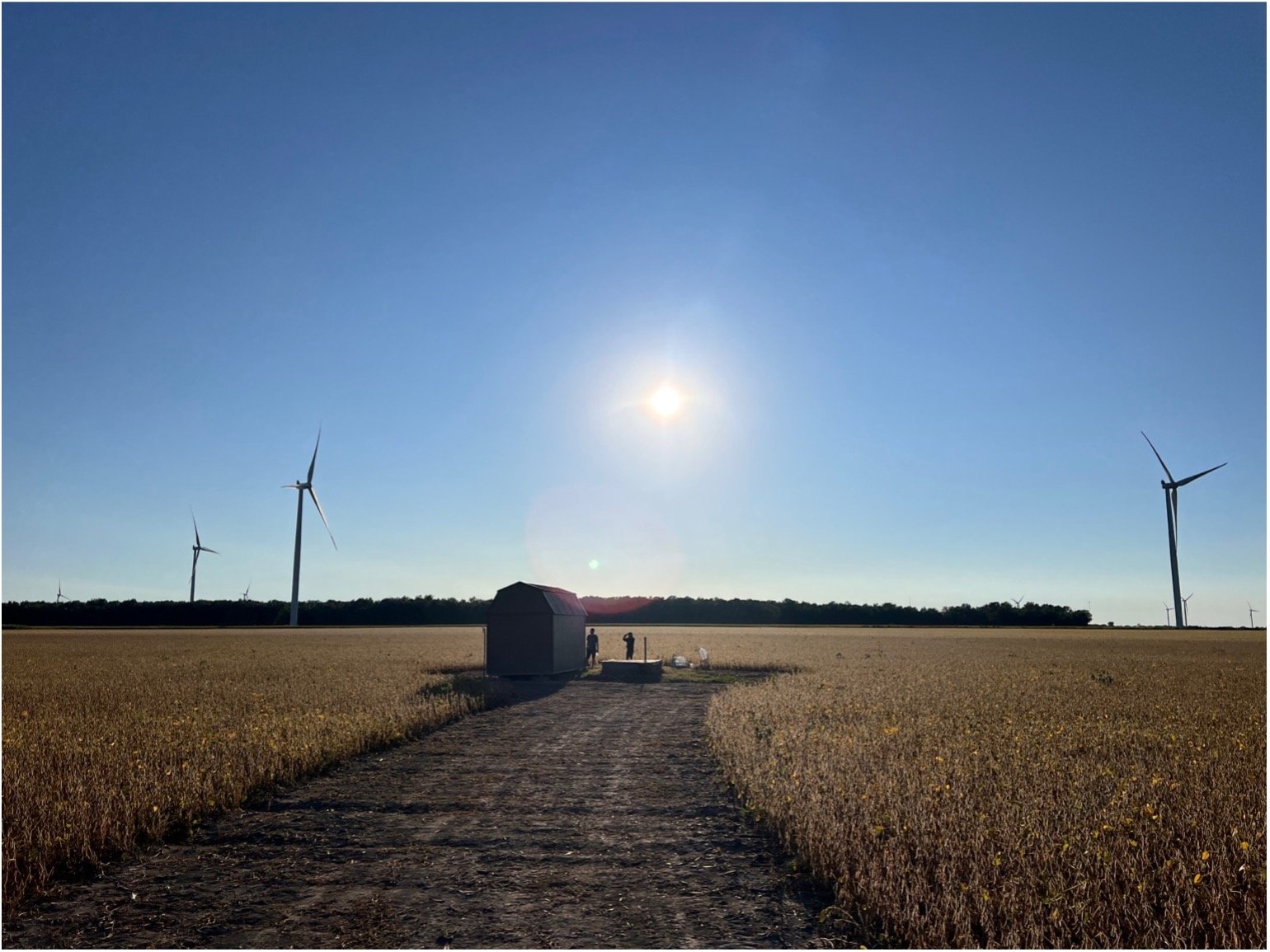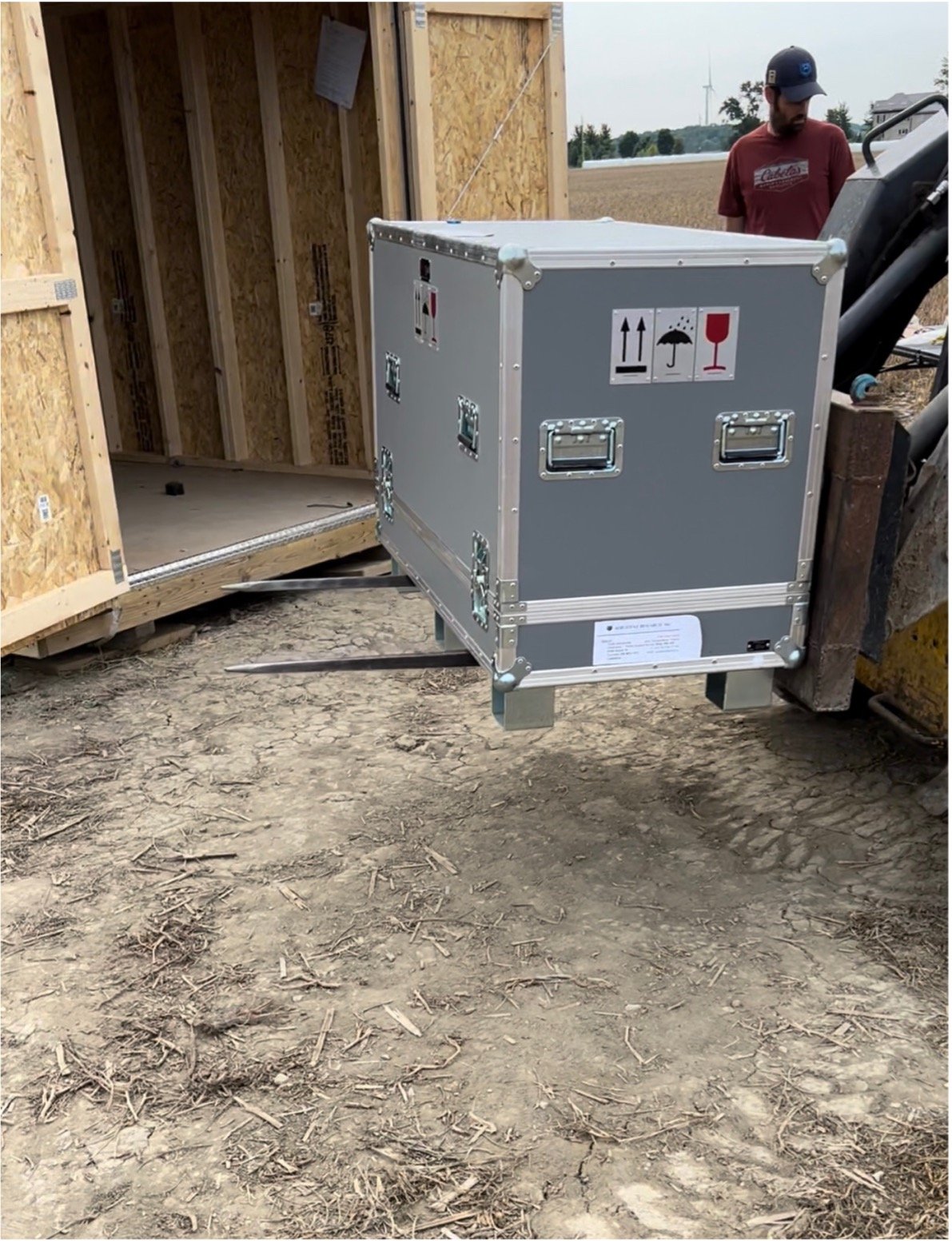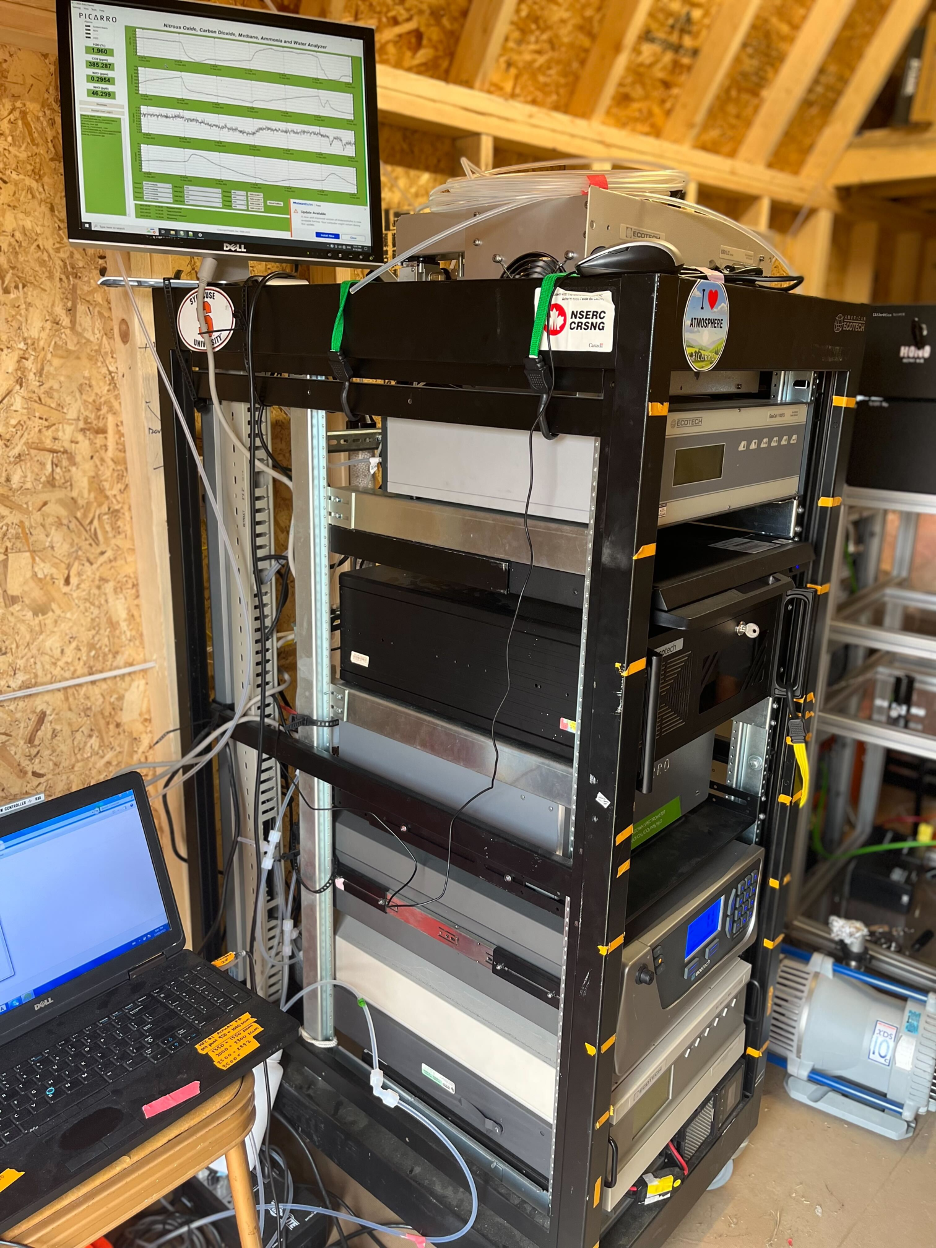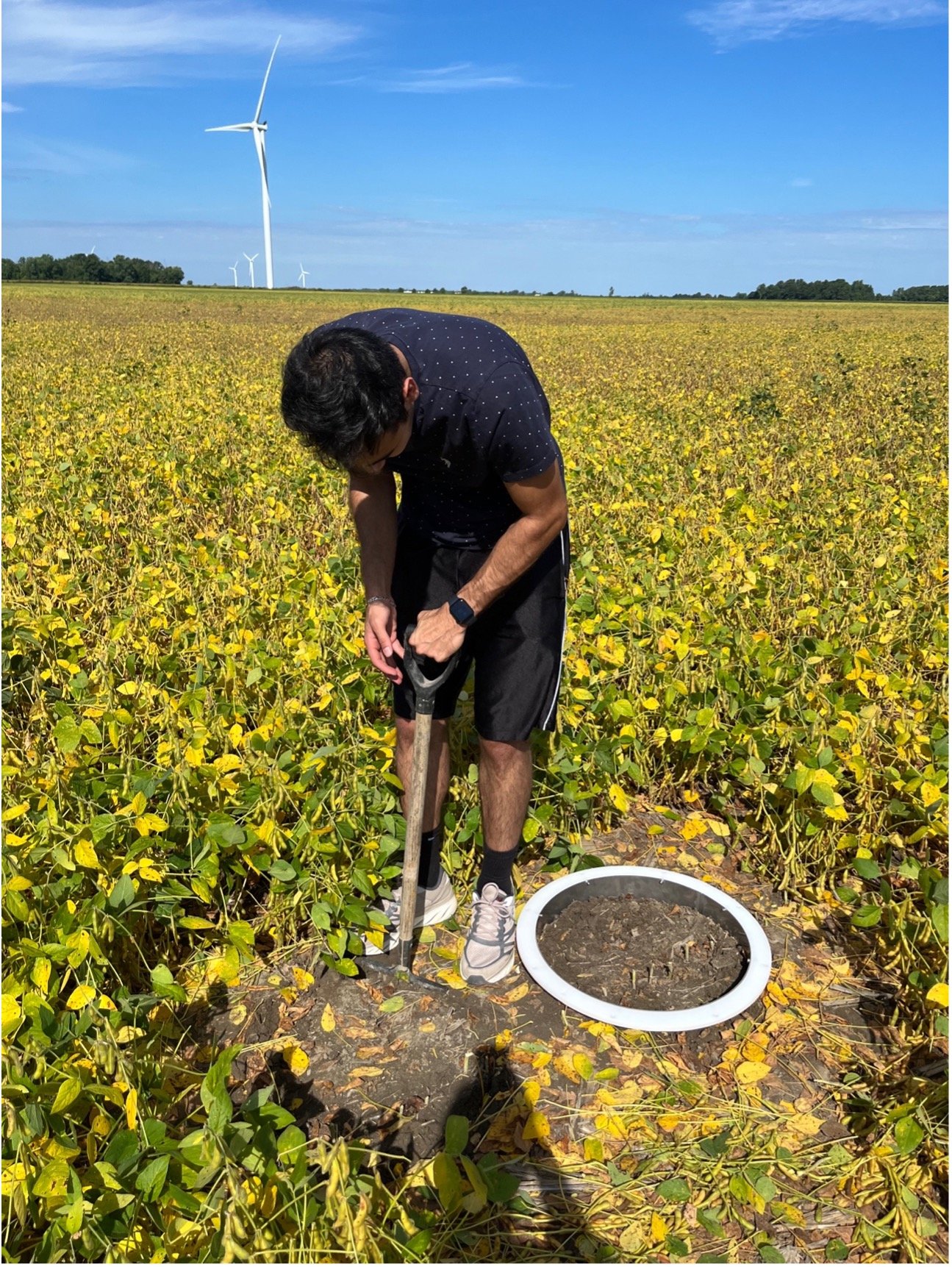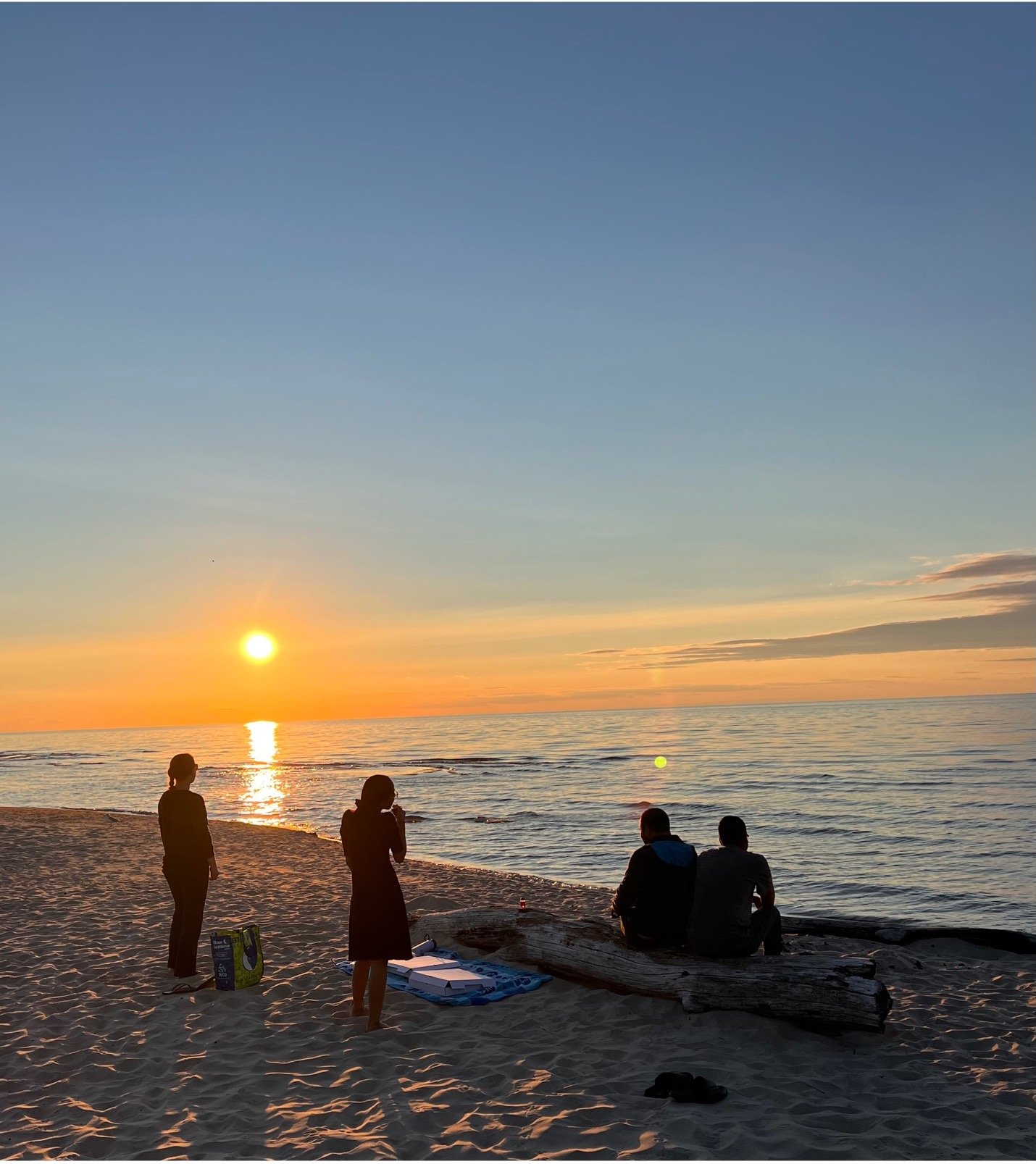At the beginning of September 2022, I had the opportunity to participate in a two-week-long field research campaign at an agricultural field site with members of my research group Moxy, Fahim, Danial, and Leigh. Our research supervisor Trevor VandenBoer planned, organized and oversaw the entire campaign. The main overall objectives of this pilot study were three-fold: (1) to measure agricultural emissions of reactive nitrogen gases which are key atmospheric species affecting air quality and climate, (2) to better understand the processes at the soil interface that lead to these emissions, and (3) to investigate the effect of nitrogenous fertilizers, namely urea on the emission of these gases. Suitably, we named our field campaign MAANURE - Measurements of Agricultural Atmospheric Nitrogen: Understanding Realistic Emissions.
The measurement site was situated on a soybean field in Lambton Shores, ON which is about two and a half hours west of Toronto and just south of Lake Huron. The region surrounding the field site was mostly croplands, wind farms, and animal farms. Adjacent to the measurement site, a shed was purpose-built to safely house and power all the instruments that we ran over the course of the campaign.
On the first day of fieldwork, our goal was to transport all the instruments to the shed and begin setting them up for measurements. However, transporting and unloading the suite of instruments to the shed was no easy feat as the site was fairly remote and had very limited space for vehicular access. Luckily, the owners of the farm were generous enough to help us move our expensive and fragile instruments carefully using their specialized farming machinery/front end loaders which can fit through small spaces. We also encountered some practical challenges to accommodate all the instruments within the limited space in the shed and had to come up with solutions on the spot. By the end of the day, we managed to set up the instruments for ambient measurements. The instruments we had in the shed were namely, a NOx analyzer for measuring nitrogen oxide and nitrogen dioxide, an ozone analyzer, a greenhouse gas and ammonia analyzer from Picarro, and a Chemical Ionization Mass Spectrometer (CIMS).
On the second day, we turned our focus on installing the Eosense gas flux chambers at the measurement site. The chambers were installed on bare soil by using dedicated soil collars which help keep the chambers firmly in place. One of the challenges with installing the chambers was picking an area of soil that was unperturbed with minimal soybean crops and allowing the base of the chambers to be primed into position for several hours before installing the top portion of the chambers. Next, we connected the chamber power lines and the gas sampling tubing to and from the chambers to all the analyzers in the shed. The chamber system was then set up for fully automated measurements using dedicated chamber software and custom codes run on a computer. Since the system was fully automated from that point on, for the remainder of the week we would simply visit the field site twice a day to ensure that the instruments were all functioning and that we were backing up our data.
During the second week of the campaign, we decided to investigate the potential effects of added fertilizer on the soil surface enclosed by the chambers. To help us determine the appropriate amount of fertilizer to add, we found out the total amount of fertilizer farmers typically apply to soybean fields from the owner of our field site and scaled down the amount based on the soil surface area of interest. To our surprise, following the addition, the concentrations of reactive nitrogen gases were several orders of magnitude higher than pre-fertilization. We were aware that adding fertilizer could increase the emissions of these gases but did not anticipate the levels that we observed. We are content that we managed to capture these events in our datasets and look forward to analyzing them in the near future. I would like to give a shoutout to the owner of the field site, Casey VandenBoer who helped us tremendously throughout the campaign with logistical and technical issues and we are very grateful for having him on our team.
Overall, this has been an eye-opening experience for me. I have gained real insights into the challenges of fieldwork and atmospheric data collection, and have a greater appreciation for atmospheric scientists and the measurements they make in fieldwork. Apart from fieldwork, we had the pleasure of visiting some of the nicest beaches in Ontario and enjoying the sunset with some pizza. At the end of each workday, we also gathered for dinner and had some great dinner conversations and laughs with group members.
Blog Post – Yashar Ebrahimi-Iranpour and Fahim Sarker


